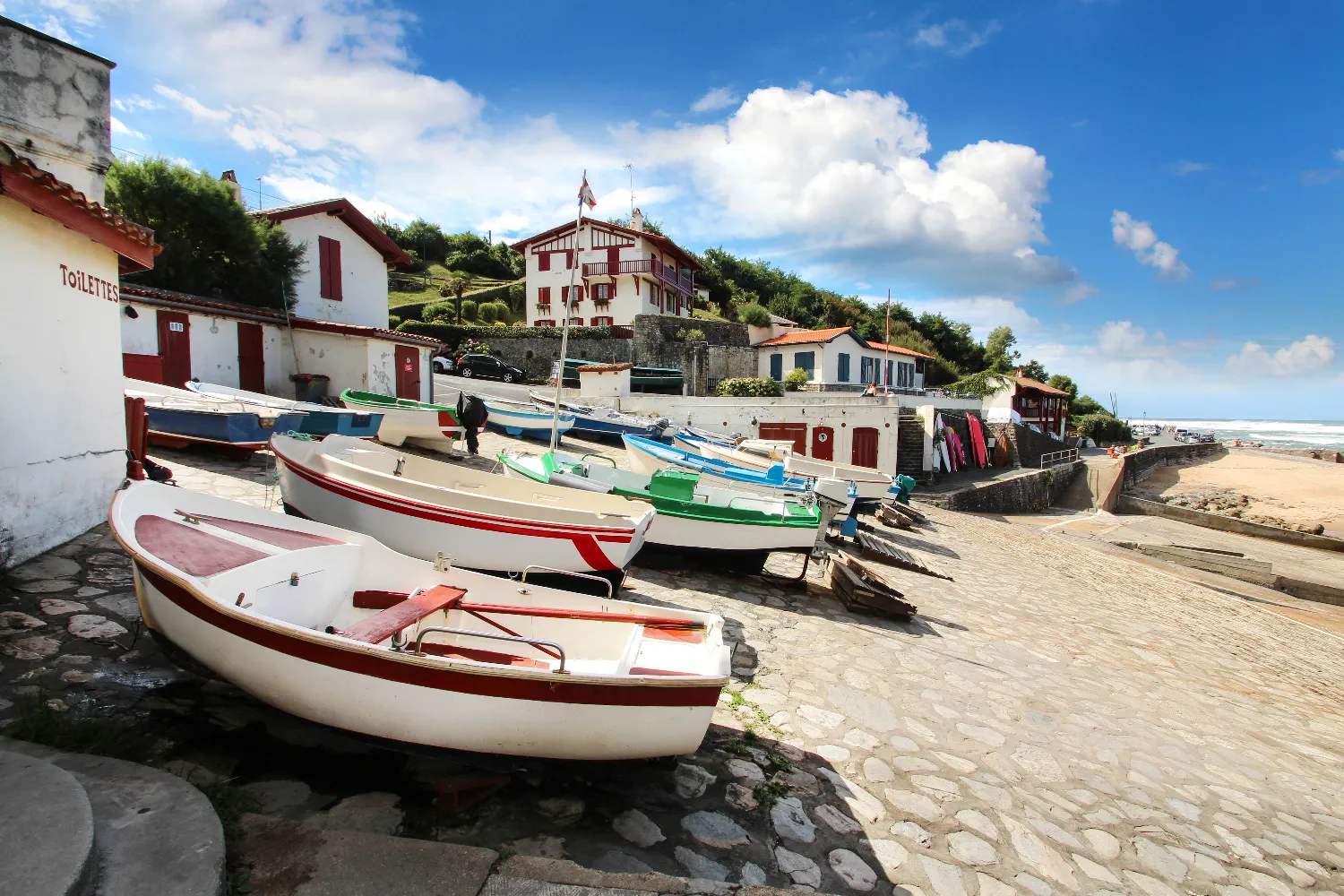Discover the Basque Country
The Basque Country, located in the extreme southwest of France, is a region rich in harmonious contrasts, between the Atlantic Ocean and the majestic Pyrenees. Discover its picturesque villages, historic heritage and renowned gastronomy.
Home » Group Stays » All our Group Destinations » Basque Country
Basque Coast
The French Basque coastline, from Biarritz to Hendaye, offers breathtaking seascapes, sandy beaches and a lively seaside atmosphere.
- Biarritz: An elegant seaside resort, Biarritz was once the preferred holiday destination of the nobility. Today, it is Europe’s surfing capital, boasting a lively Grande Plage and a restored Art Deco casino.
- Saint Jean de Luz: An authentic town with the “Ville d’Art et d’Histoire” label, Saint Jean de Luz boasts an exceptional urban heritage and a picturesque port.


Lower Navarre
Basse Navarre, between France, Navarre and England, reveals its typical villages, Irouleguy wines and unspoilt landscapes.
- Saint Jean Pied de Port: A fortified medieval town, Saint Jean Pied de Port is a must for pilgrims on their way to Santiago de Compostela. Nestled at the foot of the Route des Crêtes, its atmosphere is reminiscent of a bygone era.
Places to visit
Explore the treasures of the Basque Country, from authentic villages to panoramic peaks, traditions and local gastronomy.
- Ainhoa: A bastide on the Pilgrim’s Way to Santiago de Compostela, Ainhoa’s typical red-and-white-fronted houses bear witness to a rich historical past.
- Espelette: Renowned for its famous chilli pepper, Espelette reveals its authenticity through its beautiful houses and church.
- La Rhune and its little train: The emblematic mountain of the Basque Coast, La Rhune offers panoramic views of the Atlantic coast and the Pyrenees. Climb to its summit aboard an authentic cogwheel train and discover the local flora and fauna.
The Basque Country, between tradition and modernity, invites you on an unforgettable journey at the crossroads of cultures and landscapes, where each experience reveals the richness of this unique region.

FAQ - Everything you need to know about your trip to the Basque Country
Spring and summer are the most popular seasons because of the fine weather, but autumn also offers a special charm with fewer crowds.
Markets in San Sebastián, Bayonne and Biarritz offer a variety of local products, including food, clothing and handicrafts.
You can cycle along the magnificent Basque coast, explore picturesque villages, sample local cuisine and discover Basque culture.
Yes, Evazio also offers hiking tours for those who prefer to explore on foot. Enjoy the natural and cultural landscapes of the region.
You can book your trip online via our website or by contacting us directly. Our team will help you plan your trip.
Contact Evazio for a Tailor-made Group Stay
Send us an email or give us a call to start planning your group adventure. We'll be happy to create memorable experiences that meet your specific needs.
